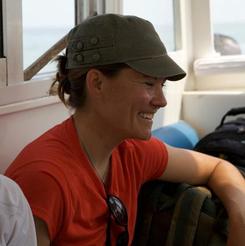|
Ellen Hamann
Lab Manager [email protected] Hasler Limnology 106 608-263-1768 Website Blog @ellen_at_large Education
|
I oversee and contribute to field operations and conduct chemical analyses of field samples in the laboratory for various group projects, including Lake Tanganyika, Hawaii, the Great Lakes, Southeast Asia, and Wisconsin Rivers. Our team studies the ecology and conservation of freshwater ecosystems throughout the world, and my involvement focuses on fish-mediated nutrient cycling in the littoral zone of Lake Tanganyika in East Africa.
Publications:
Publications:
- Hamann, E.J., B.P. Kennedy, D.C. Whited, and J.A. Stanford. 2014. “Spatial variability in spawning habitat selection by Chinook salmon (Oncorhynchus tshawytscha) in a wilderness river.” River Research and Applications. 30: 1099-1109.
- Hamann, E.J., and B.P. Kennedy. 2012. “Juvenile dispersal affects straying behaviors of adults in a migratory population.” Ecology 93:733-740.
- Phillippi, A., E. Hamann, and P. Yund. 2004. "Fertilization in an egg-brooding colonial ascidian does not vary with population density." Biol. Bull. 206(3): 152-160.

